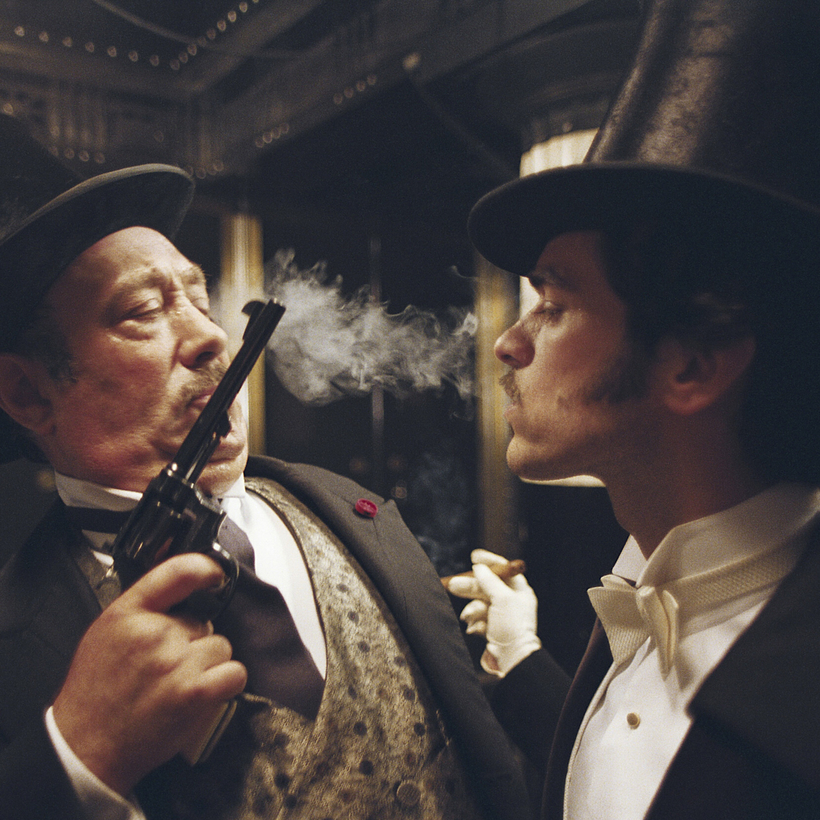In 1905, an editor at the French magazine Je Sais Tout asked a mostly failed novelist to try something in the mode of Arthur Conan Doyle’s wildly popular Sherlock Holmes stories. From this suggestion Maurice Leblanc thought up Arsène Lupin (originally “Lopin,” before a local politician of the same name protested), and that same year he published the first story, The Arrest of Arsène Lupin. So began the serial adventures of the “gentleman-burglar,” who is as well known in France as Holmes is in England.

Born in 1864, Leblanc tried his hand at journalism before arriving at the idea for a master of disguise who is a force for good despite often operating on the wrong side of the law.
He re-purposed many of the stock devices of sensational fiction—revolving bookcases, underground passages, impossible escapes from locked rooms, jewels hidden in hollowed bronze busts—for his stories, which later made way for 17 novels and 39 novellas featuring the top-hatted, monocle-wearing Lupin. But he also gestured toward not yet codified genres such as the espionage plot. (One tale involves stolen design plans for a French submarine.)

Lupin is not a detective but a thief of freakish cunning and dexterousness; when he does do detective work, it is usually to elucidate some criminal feat of his own. He is at once “gentleman and rogue, detective and criminal,” as Emma Bielecki puts it in her introduction to a new edition of The Adventures of Arsène Lupin, Gentleman Thief, part of the Macmillan Collector’s Library series.

The reissue of a selection of Leblanc’s stories seems in part inspired by the hit Netflix series Lupin, which reimagines the character as Assane Diop (Omar Sy), the son of a Senegalese immigrant in Paris whose father gives him a leather-bound copy of the Lupin tales as a boy. Many of the original stories involve scenarios of landed gentry being stealthily relieved of precious possessions, and the TV show re-purposes Leblanc’s The Queen’s Necklace for a plot about the immigrant father’s being falsely accused of stealing a diamond necklace that once belonged to Marie Antoinette.
Its most compelling stroke of adaptation, though, is the way the fraught idea of the “gentleman” is used to illuminate a racialized politics of respect, while the shape-shifting master of disguise becomes an elastic metaphor for the refusal of a facile and reductive identitarian movement.

And where the original tales are built from the stuff of print journalism—Lupin often places diverting articles in newspapers, a trick Leblanc learned from Poe’s C. Auguste Dupin (also apparently swapping in an L for the D)—the medium of public information is now wholly digitized. Accordingly, the Netflix show often veers (as does the BBC series Sherlock) into the tone and pacing of a techno-thriller.
The quintessentially Gallic Lupin’s indebtedness to the severe Briton is made overt in a number of tales, collected in 1908 as Arsène Lupin Contre Herlock Sholmes. (Doyle’s attorneys would not grant use of the name, so Leblanc generated quasi-anagrammatic substitutes.) “What greater compliment could France pay to England?” crime-lit super-fan T. S. Eliot asked of these tributes, even if in the end, of course, the French rogue checkmates his English antagonist in an act of near-impossible pickpocketing.

Lupin’s nimbly executed crimes are often accompanied by a dilettantish connoisseurship, and he repeatedly spools out learned appreciations of frescoes, wall hangings, furniture, sculpture, and rare books. In this respect, he seems in part a rehearsal for later dandified detectives such as Philo Vance, whose patter exudes a certain kind of fin de siècle aestheticism that can sound like a parody of Walter Pater.
But crime, Leblanc seems always to be suggesting, is an art, too. In all the tales, one feels Lupin is in love with the game for its own sake, a playful amateur addicted to the thrill of a dangerous puzzle, faithful to a law higher than those prosecuted by lowly police.
A new edition of The Adventures of Arsène Lupin, Gentleman-Thief, by Maurice Leblanc, will be published by Macmillan Collector’s Library on January 11
Paul Grimstad is a New York–based writer and musician. He teaches in the Humanities Program at Yale
